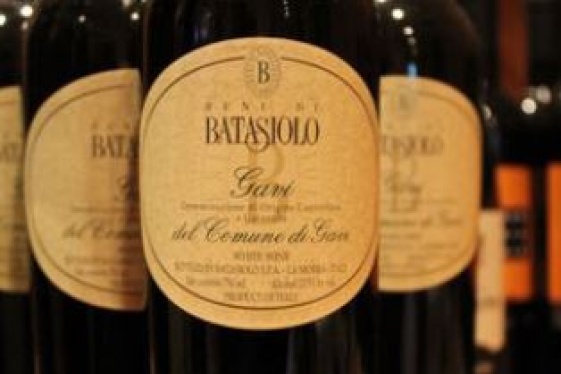
Camilla Calamandrei (Author of the documentary "Prisoners in Paradise")
Soldati italiani negli Stati Uniti “Prigionieri in Paradiso” durante la Seconda Guerra Mondiale

During World War II more than 51,000 Italian soldiers were brought to the United States as Prisoners of War. The award-winning documentary film “Prisoners in Paradise,” recounts the story of the young soldiers brought to the US as POWs, their romances and friendships with American women, their contribution to the Allied war effort, and — for some — their decision to return to live in the U.S.
We are happy to speak about this with the Italian American director and producer of this very important documentary, Camilla Calamandrei, Welcome to We the Italians!
To begin with, could you please tell us about yourself and your Italian heritage?
My father, Mauro Calamandrei, was a journalist who served for many years as the American Correspondent for L’Espresso, and later as the American Cultural Correspondent for Il Sole 24 Ore. He was born in 1925 in a small village just outside Florence. His father was a talented shoemaker, and his mother was a housewife with very little education or literacy - their home had one lightbulb which was used only by his father to be able to work at night. During World War II, Mauro joined the resistance as a partisan. After the war, he earned a PhD from the University of Florence and was later awarded a Fulbright scholarship to study at the University of Chicago. I was born in the United States, but I’ve always felt deeply connected to Italy and my family in Florence. I am a dual citizen.
How did the idea for your wonderful documentary come about?
I had visited my family in Florence a number of times throughout my childhood, but I did not speak Italian so our conversations were limited. Then, once when I was visiting in my early twenties, my uncle (who didn't speak English and who had never been to the US during my lifetime) started to recount a story in Italian, “When I was a prisoner in America during the War…” I had no idea what he was talking about. I had never heard his story of being a POW, and I had no idea that there had been Italian prisoners of war in the U.S.
I started looking for information in books or films about Italian POWs in America but there was very little documented, just a handful of academic articles and one book by an energetic history buff, Louis Keefer.
Louis graciously shared his contacts with me so I could begin meeting with surviving POWs across the US. I worked on the film for 10 years, conducting preliminary interviews, doing background research with consulting scholars, fundraising, filming on location across the US and in Italy, unearthing archival footage and crafting the story.
Who are the Italians featured in the documentary?
I interviewed 19 surviving Italian POWs while researching the film, and then selected four POWs and two of their wives to film in the US, and three surviving POWs to film in Italy. Four of the men featured in the film worked in Italian Service units supporting the US and two did not. Of the two who did not collaborate, one regretted his decision later. And wished he had supported the Allied war effort.
Italian prisoners were held in 26 different U.S. states. What differences were there between the various locations?
The POWs I interviewed had very, very similar descriptions of their experiences in the US. The first story every surviving POW told me about America was about the abundance of food. One Italian officer in the film tells the story of when they were still captives in Africa but held by the US military - and a US soldier opened a can and pulled out an entire cooked chicken.
Another tells the story of his disbelief upon arriving in the US that so much food could be provided for enemy POWs. And yet another tells of POWs in Ogden, Utah hiding bread in the rafters of their barracks because they feared it would run out. The Americans couldn’t figure out how the Italian POWs were eating so much bread but eventually they discovered what was happening.
Each of the POWs I spoke with were amazed by the wide open vistas as they were being transported across the country by train. And their stories continued to be very similar regardless of where they were held in the US. Most films might try to follow the separate details of each man’s story but there was so much overlap that we were able to make a tapestry of moments and experiences that add up to the story of all of them.
We took the beginning of each man’s story but then took the next piece from just one or two people, and the next piece from another. We didn’t need to revisit every step of each man’s story and yet you feel you have lived the unfolding story of each man.
What kind of interaction did the prisoners have with the Italian American community?
After the Italian armistice in September 1943, 35,000 Italian POWs joined Italian Service Units in non-combat roles to support the US war effort, by doing laundry, farming, cooking etc. for US soldiers in the US. Those who agreed to serve in these military units had to pledge allegiance to the new Italian government, and were held in camps all across the US.
At many of these camps, Italian POWs were allowed Sunday visits from local Italian American families. On occasion, they were even permitted to attend community events outside the camps - always under supervision - or share meals with local families. Romances bloomed between POWs and local Italian American women and some were quite serious. Although, all POWs were repatriated to Italy after the war, a number of women later traveled to Italy to marry their POW sweethearts. Many chose to return to the US because conditions in Italy were quite challenging after the devastation of the war.
In contrast, Italian POWs who refused to cooperate with the U.S. war effort were sent to camps in Texas, where they endured stricter conditions and reduced food rations. I did find one American guard from Texas who became friendly with the POWs, but the non ISU POWs had no regular contact with Italian American communities.
Is there any particularly interesting story or anecdote you'd like to share with our readers?
I like all the stories but the story of Mario and Anna is particularly lovely, I think. Mario had been a POW in Ogden, just outside of Salt Lake City, Utah. Anna and her family would come to visit on Sundays in hopes of finding POWs who might know their relatives in Italy. While Anna’s father was skeptical, the two would eventually marry. After the war, Mario was repatriated but Anna followed him there to get married, and together they returned to the U.S. They spent the rest of their lives in Ogden, the same town where he had once served in an Italian Service Unity. They bought one of the decommissioned POW barracks, and converted it into their first home.
One touching detail that didn’t make it into the film is that Anna had always dreamed of moving to the West Coast as a young woman. But Mario grew deeply connected to her family, so they stayed in Ogden and raised three children. She never had the opportunity to live by the ocean, but she built a full, joyful life surrounded by family and grandchildren. Mario closes the film by saying, “Down deep, you love your country (Italy), but America gave to me everything.”
What happened to the prisoners after the end of the war?
All Italian POWs held in the US were repatriated to Italy, no exceptions were granted as far as I could discern.
What has this story taught you?
I learned a great deal making the film but there are two things I would highlight.
War is life changing. For those of us who've grown up never having to be involved in a war, it is eye opening to understand that people are plucked from youth and put into these situations not of their own making that change their lives. In many cases it impacted the trajectory of their educations and their careers. They never got those years back.
There were powerful connections between Italians and Americans developing both before and after WWII. And the Italians had strong ideas about the US, either from movies or relatives in the US. My uncle tells the story in the film of being captured in Northern Africa by the British and immediately turning to his friend and saying, “Let’s go with the Americans: things will be better with them!” So they actually “escaped” from the British POWs to join the American POWs. Somehow, even then, they had this idea of America and were curious to experience it for themselves. Long before World War II, there had been a steady flow of Italians coming to the U.S. for work and then returning home, so the bond between Italy and the United States was already well established.
I am so happy I had the opportunity to make this film and provide a window into these stories - otherwise hidden in the margins of history. You may read more about the film and the historical background at the film website: PrisonersInParadise.com.
You may be interested
-
‘Fuggedaboudit’ the motto of new Italian del...
By Kimberly Sutton Love is what brought Tony Nicoletta to Texas from New York.The transpl...
-
Buon Appetito! Unique Italian dining at Ragú...
There's something to be said for having your food prepared tableside. Guacamole tastes fre...
-
Chef Carmelo Mauro to host Beni Batasiolo Wi...
Fiorenzo Dogliani, owner of Beni di Batasiolo, will join Carmelo Mauro for an exclusive wi...
-
D'Amico's Italian Market Café expanding to K...
The popular D'Amico's Italian Market Café, a 16-year-old mainstay of Rice Village, is head...
-
Davide Gambino è il miglior "Young Italian F...
Si intitola Pietra Pesante, ed è il miglior giovane documentario italiano, a detta della N...
-
Eat Drink And Be Merry IACL Christmas Party
Sunday December 14, 5.30 pmSole Mio - 8657 S Highland Dr, Sandy (Utah) 84093 The Italian...
-
Italian-styled event raises $160k for Housto...
A group of citizens made a dreamy trip to Venice and back at last night's "Sotto Le Stelle...
-
The 37th annual Houston Italian Festival set...
The 37th Annual Houston Italian Festival will bring Italian Bingo and Poker all' Italiana...
























